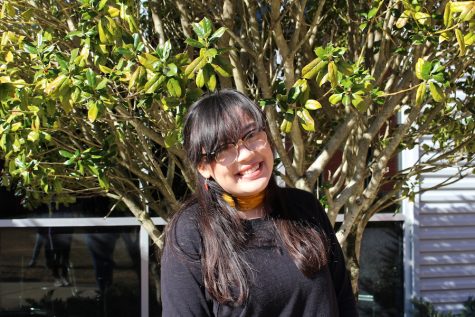Down Syndrome Awareness at BJ
October 28, 2016
October is Down Syndrome Awareness month, and while many Bob Jones students can say they know what Down syndrome is, how often are Bob Jones students exposed to those with it?
When James Clemens was built in 2012, a special education wing was built that accommodates to children with severe special needs.
“We mostly have children with learning disabilities, some of our students have autism, some have behavioral issues, some have other health impairments,” Ms. Wrights, the Special Services coordinator at Bob Jones, stated. “We do not have any students with Down syndrome.”
Although the accommodation of those with Down syndrome at school is far more pertinent, Bob Jones students lose the opportunity to interact and befriend those with Down syndrome.
Mrs. Panagos, a Bob Jones teacher, said, “I miss seeing Bob Jones students being surprised by what students with Down syndrome are capable of. Despite what we were learning on that particular day, that was the biggest lesson.”
Ms. Wrights and Ms. Summers, another Bob Jones special education teacher, both came to the same consensus: schools who integrate students with Down syndrome into the mainstream student body have better relationships and less bullying.
“We don’t see [bullying] as much as we did in the past, but it’s still there, they still get bullied,” Ms. Wrights said.
If Bob Jones students can’t befriend those with Down syndrome at school, then where can they? BJ students have annually participated in Special Olympics, an event catered to those with intellectual disabilities, such as down syndrome, and can be one of the only times a Bob Jones student ever interacts with someone with an intellectual disability.
While the Special Olympics is a marvelous way for both those participating and the volunteers to grow and have fun; what lessons are BJ students not learning the other 364 days of the year when students with Down syndrome are not in their classrooms?At many schools, those with intellectual disabilities do not interact with the other students of that school, staying in the special education classrooms for the majority of the day. The students who receive assistance from the special education department at Bob Jones are integrated into regular classes.
Ms. Summers stated, “Some kids may not want to be seen with me because they know I am the special education teacher.”
Every year 6,000 babies are born with Down syndrome, so what is Bob Jones doing to make sure we have a culture of acceptance?
First, we must acknowledge that we need more accommodations for those with Down syndrome and other severe intellectual disabilities, as this will not only improve the lives of Down syndrome students, but the other Bob Jones students who have never been exposed to those with it. Secondly, we have to accept the fact that everyone learns differently, and not everyone can be judged on the same scale.
“Every child learns differently. If you have a room with 20 to 25 kids, each one is going to learn differently, so you have to be on your game,” Ms. Wrights explained.
As a school system, we often assign intelligence and talent with a letter grade, accidentally disregarding the accomplishments of those with disabilities.
Madeline Stuart, an Australian model with Down syndrome, made history in 2015 by being the first model with Down syndrome to walk in New York Fashion Week (NYFW). Madeline Stuart is one of many to have made history for those with the syndrome, and reinforce the idea that disability doesn’t have to stop someone from living their dreams.
The issue that Down Syndrome Awareness Month is trying to solve is not only that people do not know about Down syndrome, but that people do not accept people with Down syndrome as integral members of a society.
As October comes to end, Bob Jones students need to ask themselves this essential question: What are we doing to make people with Down syndrome feel accepted?


